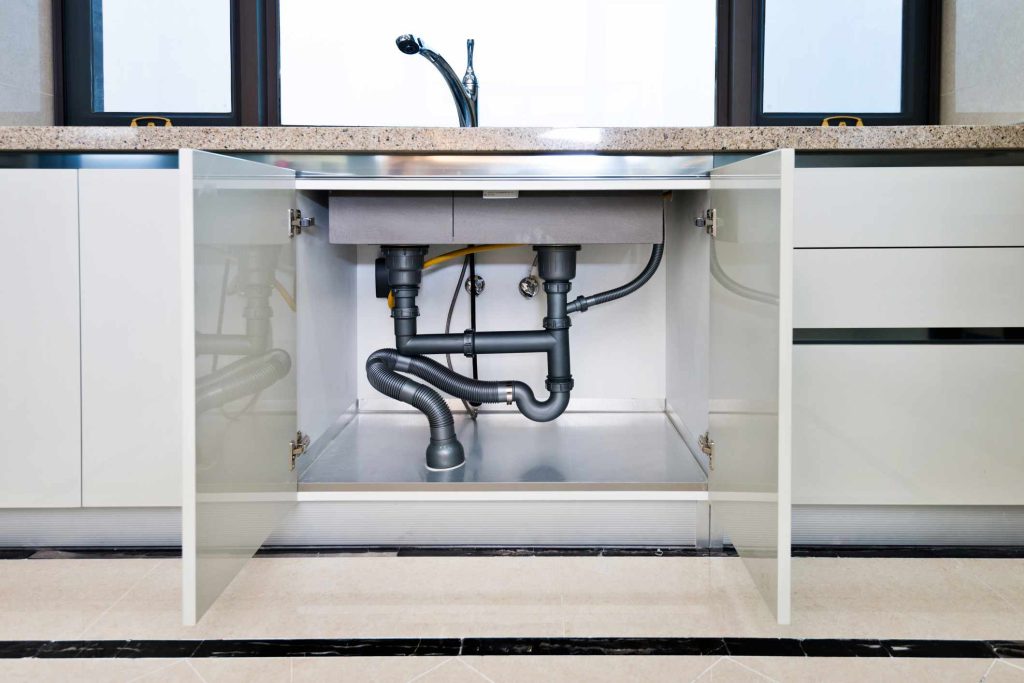A leak under the kitchen sink can lead to serious water damage if not corrected as soon as you spot it. In many cases, a leak could indicate that you need to replace the sink strainer, which is a relatively easy process. But first, you need to confirm the source of the leaking water and make sure the problem is actually the sink strainer and not something more serious, such as a leaking pipe. If you find that the leak’s source is the joint where the sink and drain come together, a faulty sink strainer is the cause. It’s a matter of a little patience and simple tools to fix the problem and save your kitchen cabinets from water damage.
How to Easily Install a Kitchen Sink Drain
What You’ll Need
Equipment / Tools
- Channel-type pliers
- Plumber’s putty
Materials
- 1 A new sink strainer (match the color of your existing strainer)
Instructions
-
Remove the Sink Strainer
Start by removing the pipes that are connected to the old sink strainer. Use channel-type pliers to loosen the slip nuts on the drain fittings, then pull the drain trap off the tailpiece of the sink strainer.
Once the drain line is disconnected from the existing strainer you can disconnect the strainer. Often this can be difficult. As you can see in the picture, the strainer can become badly rusted. If the large nut can not be loosened with a channel lock pliers or the entire strainer begins to turn then you may have to slice (cut the nut). This can be done with a sawzall, hacksaw, or simply a handheld hacksaw blade (wrapped in a cloth to hold it). The nut should be sliced 3/4 through to allow for a very fine screwdriver that you wedge into the cut and twist. This will snap the nut and allow for the removal of the entire strainer.
-
Prepare the Drain and Sink Strainer
Clean the area around the sink opening before installing the new strainer. There can be quite a bit of buildup from the old strainer, but it should clean up relatively quickly.
Separate the various parts of the basket strainer, and spread them out within reach. Loosen the screws on the retainer.
-
Apply Plumber’s Putty
Roll out a generous rope of plumber’s putty to a uniform width. Wrap it around the base of the strainer on the underside of the lip.
Set the strainer into the sink drain opening, taking care to center it, and align it as needed. Push it down slightly to allow the putty to adhere to the sink a little.
-
Secure the New Sink Strainer
From the underside of the sink, first place the flexible washer, then the metal washer into place over the body of the sink strainer. Hold them in place.
Thread the retainer on before tightening the screws.
Tighten the screws evenly and firmly with your hand. If you need to tighten a little more, use a screwdriver or pliers. Take care not to tighten so much that the rubber washer squeezes out of the strainer under the sink.
-
Reinstall the Drain Pipes
Reinstall the pipes for the sink drain in the opposite order in which they were removed. Turn the water on and check for leaks.
-
How do you change a sink strainer?
After removing the old strainer, thoroughly clean the area of buildup. Then, apply plumber’s putty to the new strainer, secure it in the sink, and reattach the drain pipes.
-
Are sink strainers a standard size?
No, sink strainers do not come in just one size. Most kitchen sink drains are 3.5 inches in diameter, but sometimes the opening can be larger or smaller.
-
How long does a sink strainer last?
A sink strainer should last for the lifetime of your kitchen sink—potentially for several decades—especially if it’s made from quality stainless steel.
Read the full article here














